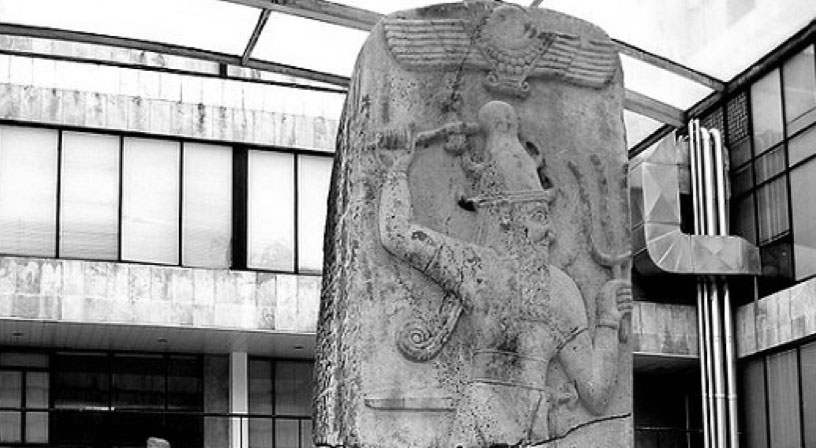
Islamic fundamentalists in Syria have started to destroy archaeological treasures like Byzantine mosaics and Greco-Roman statues because their portrayal of human beings is contrary to their religious beliefs. This systematic destruction of antiques may be the worst disaster to ancient monuments since the Taliban dynamited the giant statues of Buddha at Bamiyan in Afghanistan in 2001.
In mid-January, the Islamic State of Iraq and Syria, a former Al-Qaeda affiliate, dynamited and destroyed a sixth century Byzantine mosaic near Raqqa on the Euphrates.
The official head of antiquities for Raqqa province, who fled to Damascus and wants his identity concealed told the media, “It happened between 12 and 15 days ago. A Turkish businessman had come to Raqqa to try to buy the mosaic. This alerted them [Isis] to its existence and they came and blew it up. It is completely lost.”
Other sites that have been destroyed by the Islamic fundamentalists include the reliefs carved at Shash Hamdan, a Roman cemetery in Aleppo province. In the same area, statues carved out of the sides of a valley, have been purposely targeted and smashed into fragments.
According to Maamoun Abdulkarim, general director of antiquities and museums in Damascus, extreme Islamic iconoclasm puts many antiques and relics at risk.
“I am sure that if the crisis continues in Syria we shall have the destruction of all the crosses from the early Christian world, mosaics with mythological figures and thousands of Greek and Roman statues,” he said.
Syria has more surviving archaeological sites and ancient relics than most other countries in the world. These range from the Umayyad Mosque in Damascus with its magnificent eighth-century frescoes to the Bronze Age Ebla in Idlib province in north-west Syria, which flourished in the third and second millennia BC and where 20,000 cuneiform tablets were discovered. In eastern Syria on the upper Euphrates are the remains of the Dura-Europos, a Hellenistic city called the “Pompeii of the Syrian desert” where frescoes were found in an early synagogue. Close to the border with Iraq are the remains of Mari, which has a unique example of a third-millennium BCE royal palace.
The most devastating and irreversible losses to Syria’s rich heritage of ancient cities and buildings are the result of looting. Much of this is local people looking for treasure, though in many cases they are obliterating the archaeological record by using bulldozers. Abdulkarim and his staff worry most about the looting having become large scale over the last few years. According to him, there is a mafia from Turkey, Iraq and Lebanon hiring hundreds of people to strip sites.
Abdulkarim also complains that he has received little international help in preventing the looting of Syria’s rich heritage. He fears antiquities that have survived invasions and wars for 5,000 years may soon be rubble.
Photo Credits: Verity Cridland
